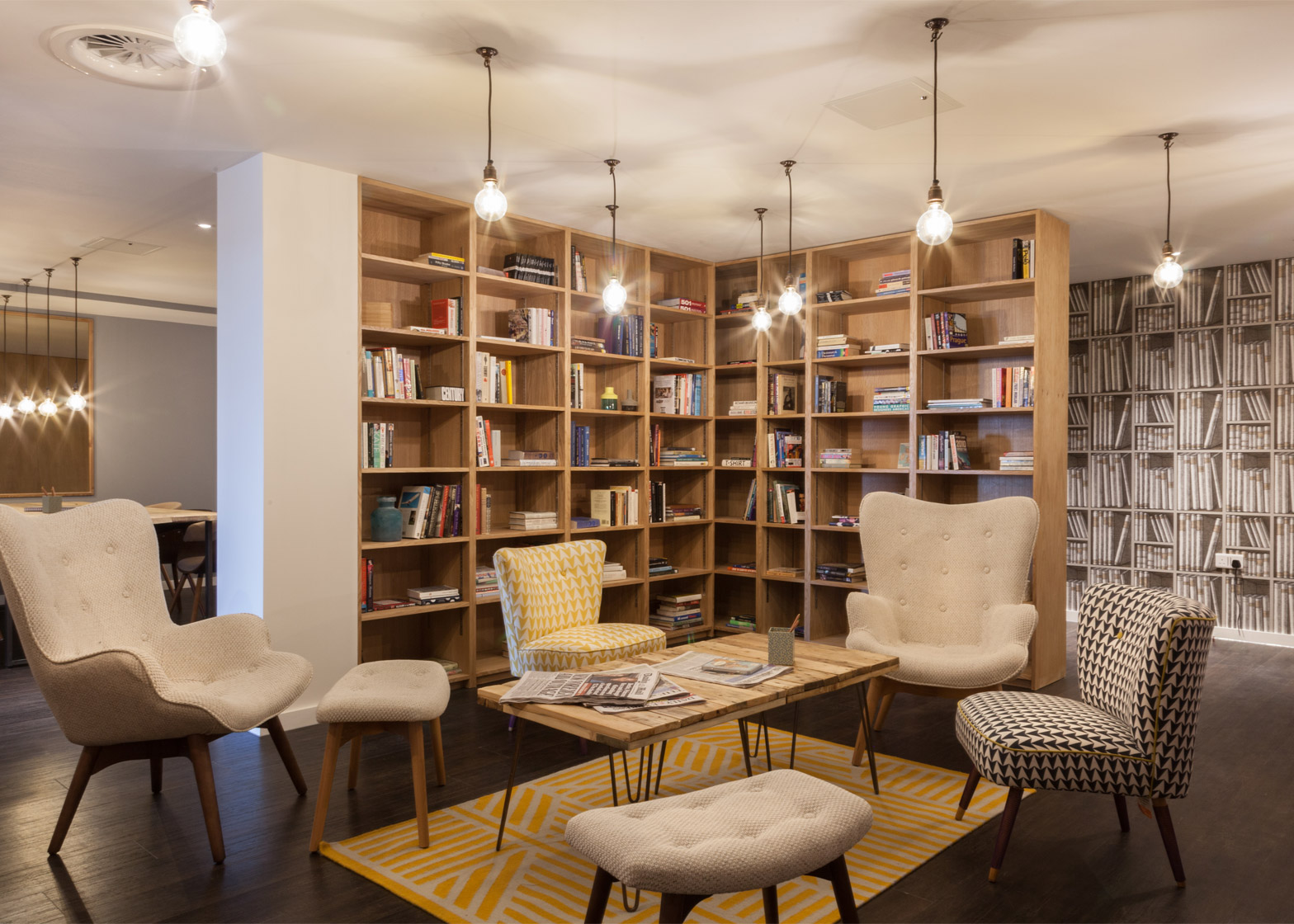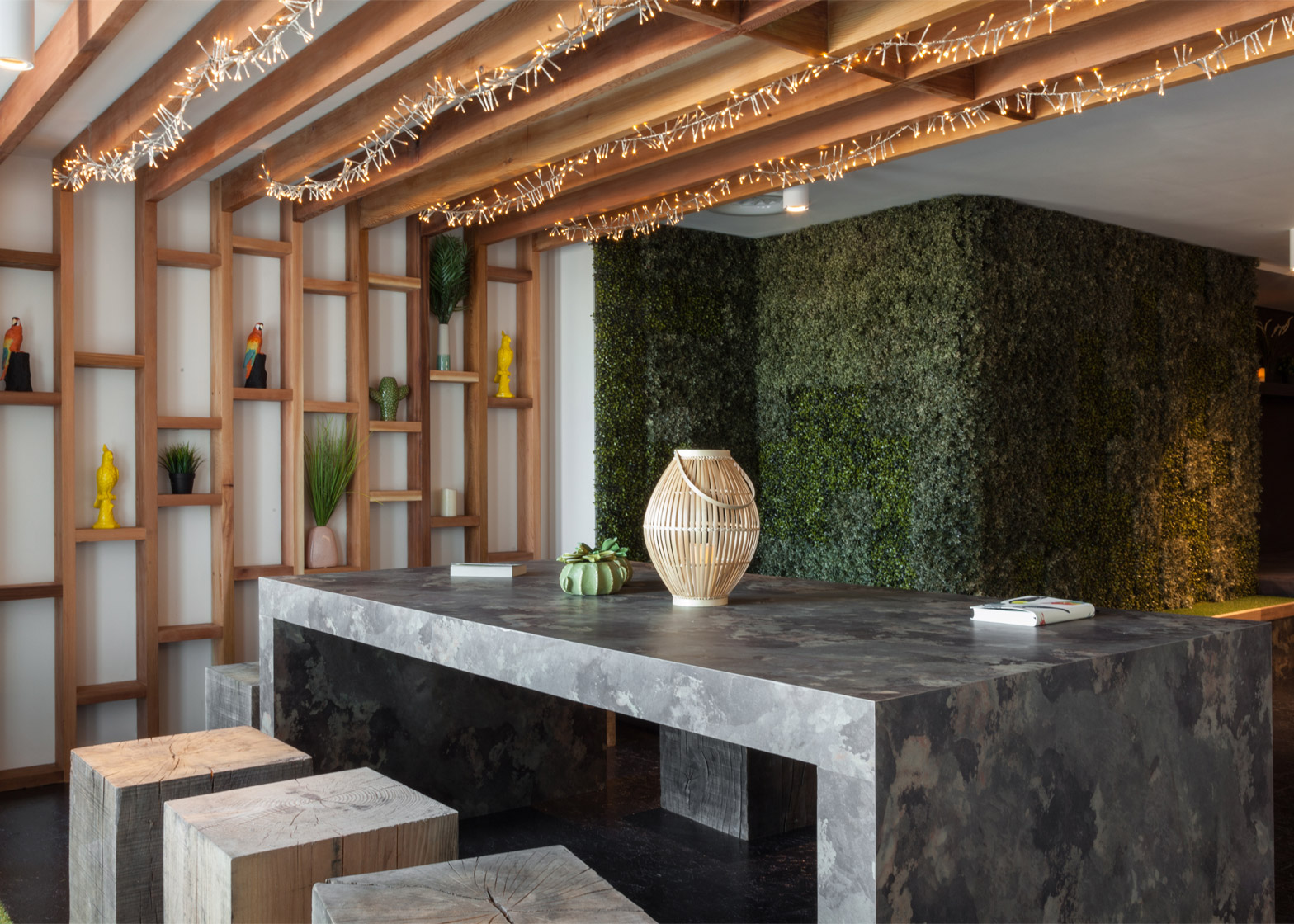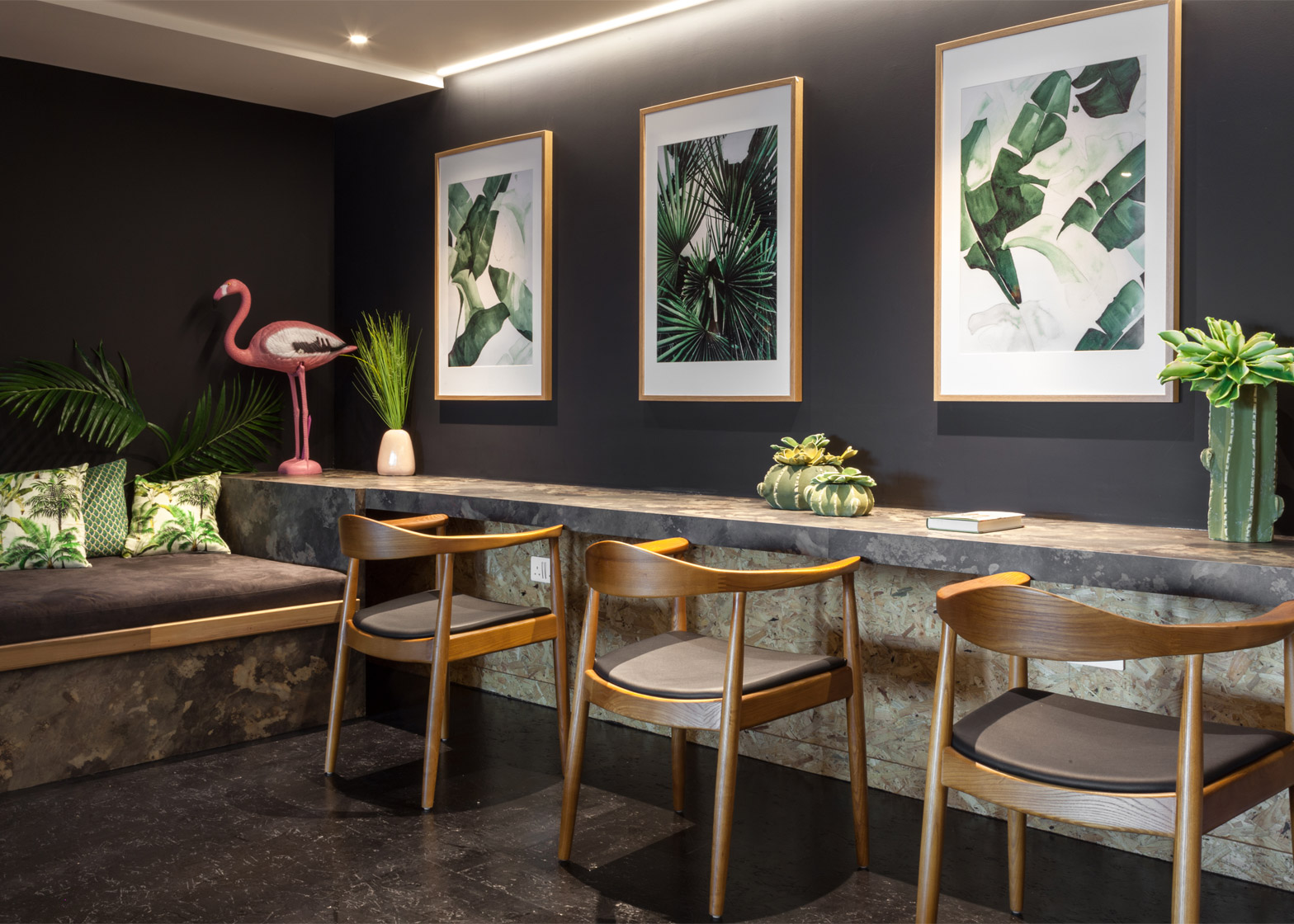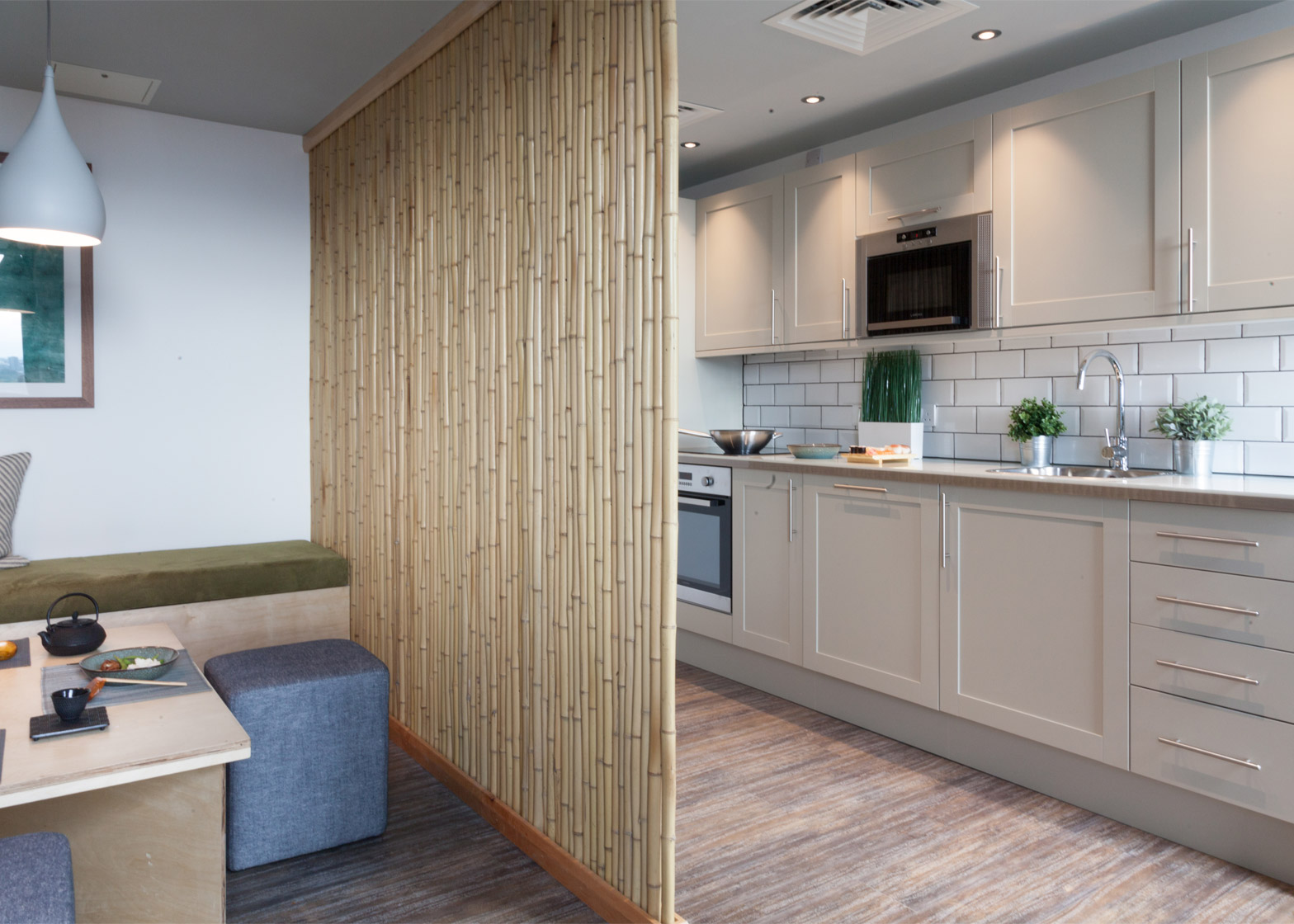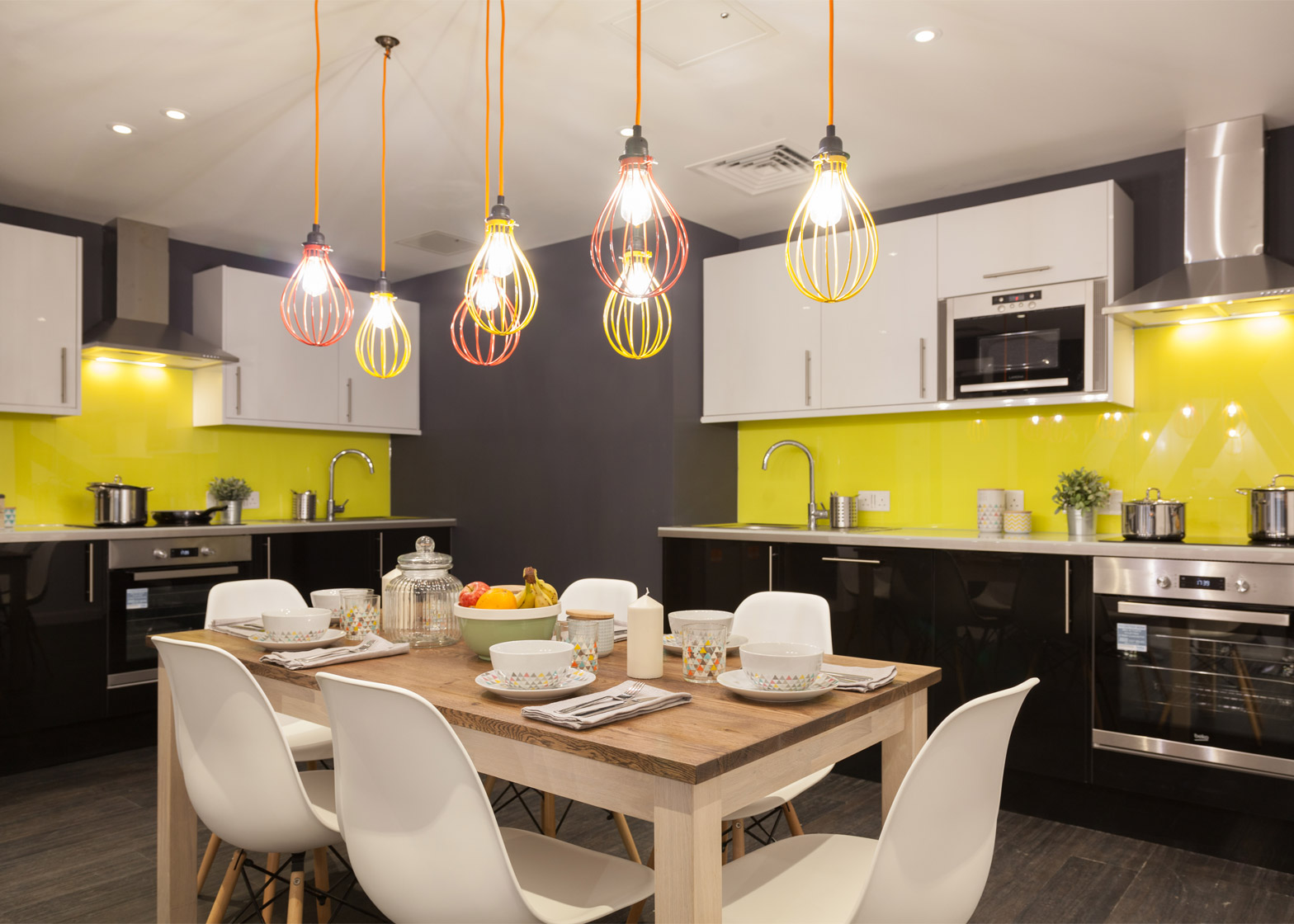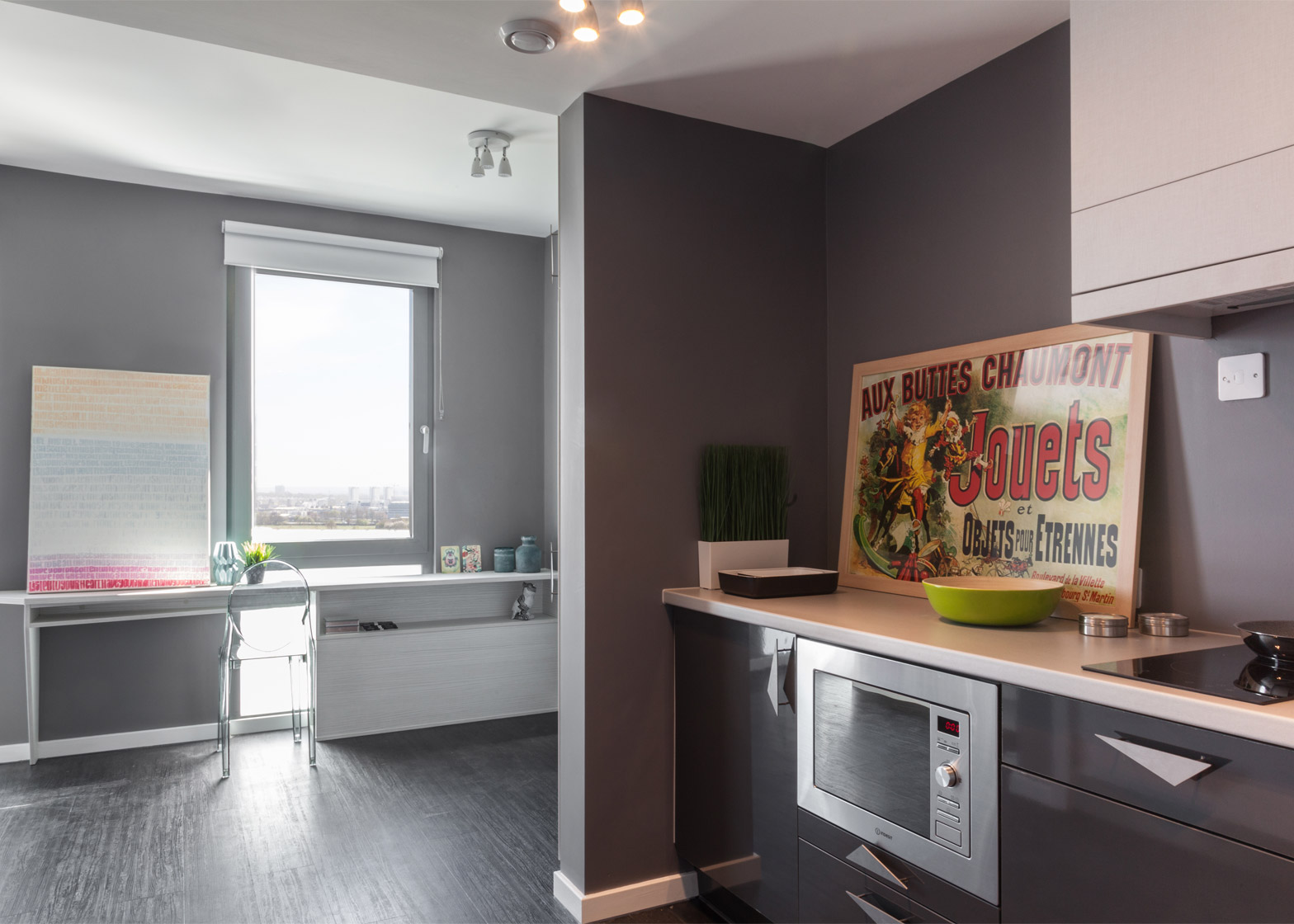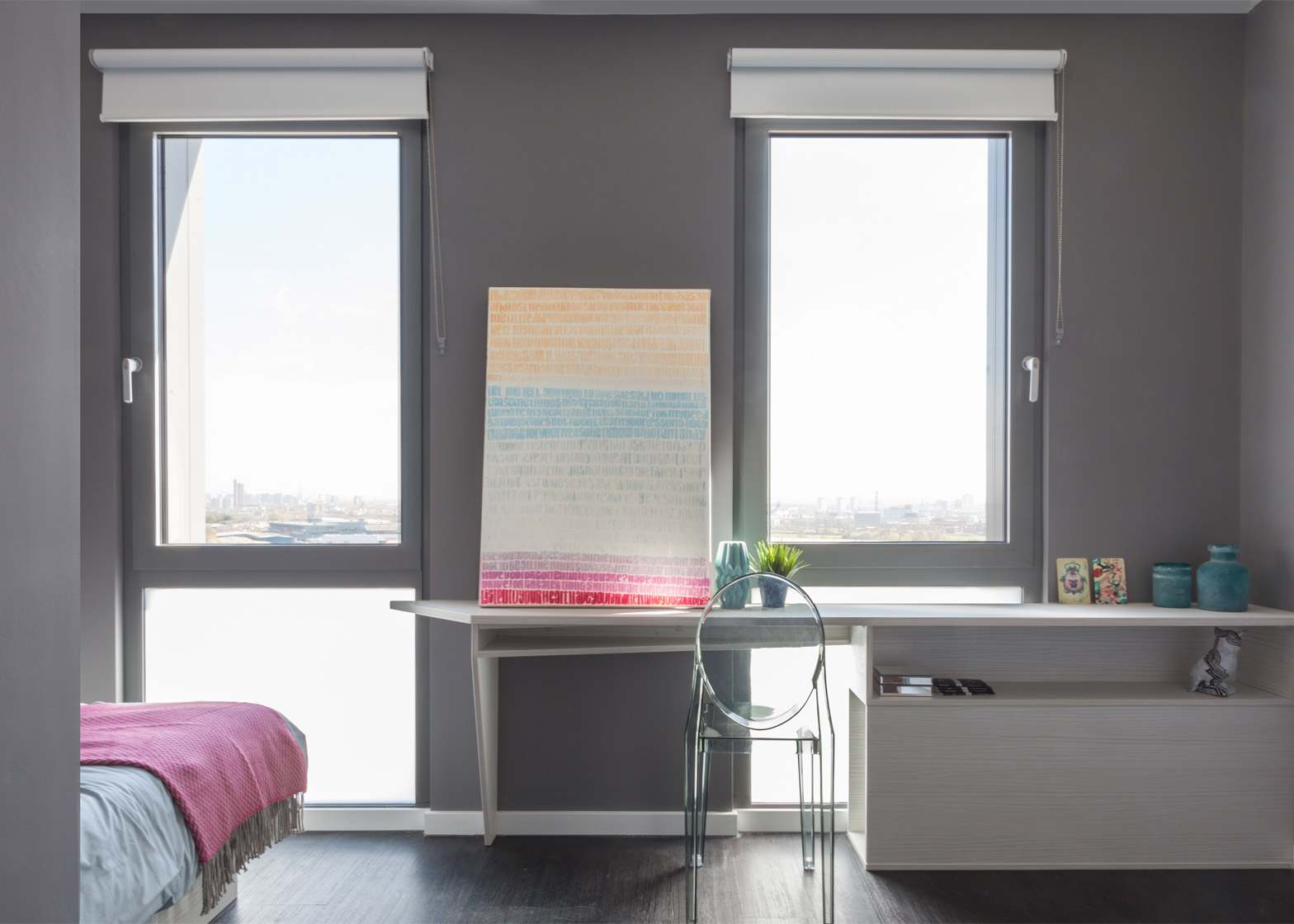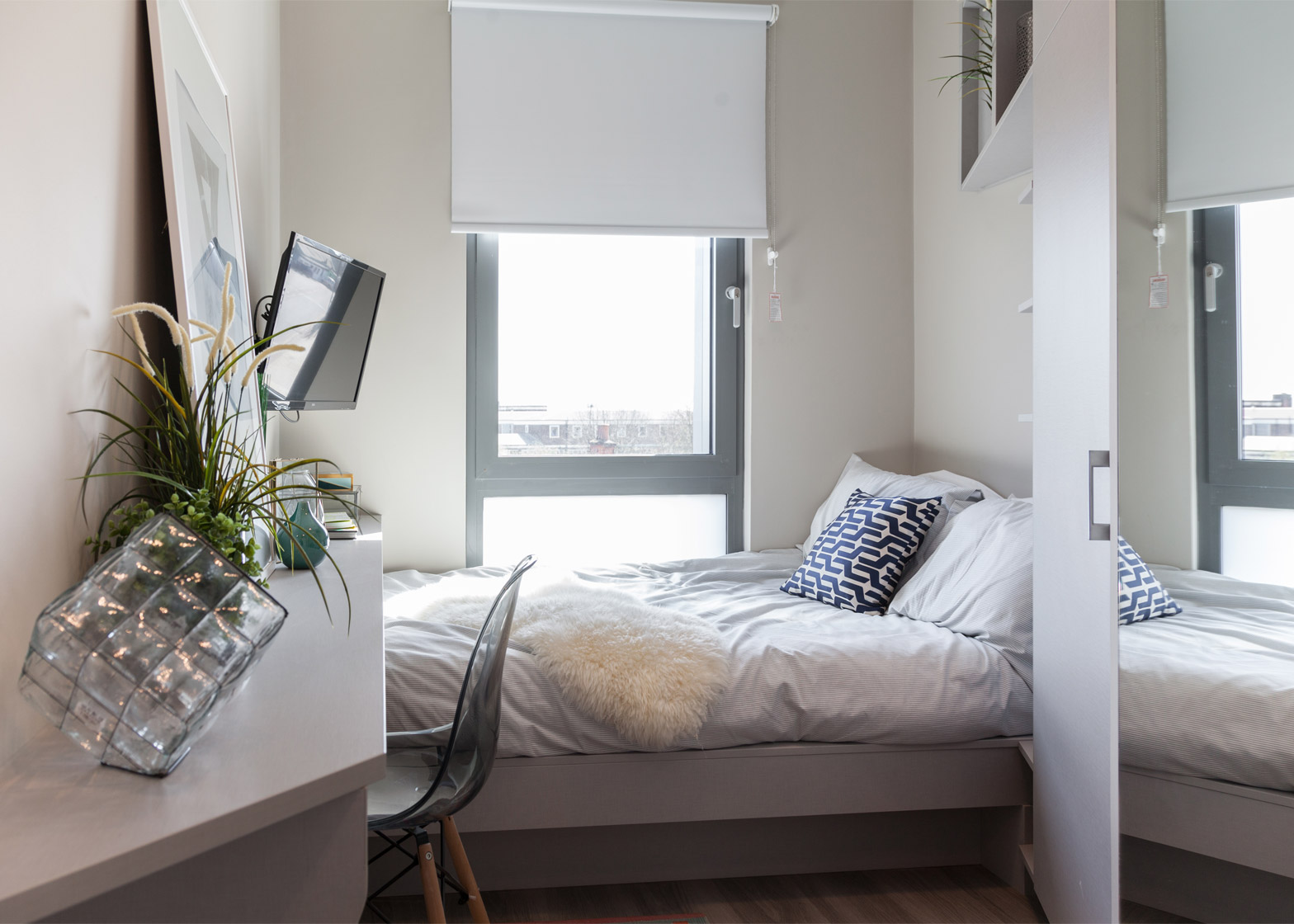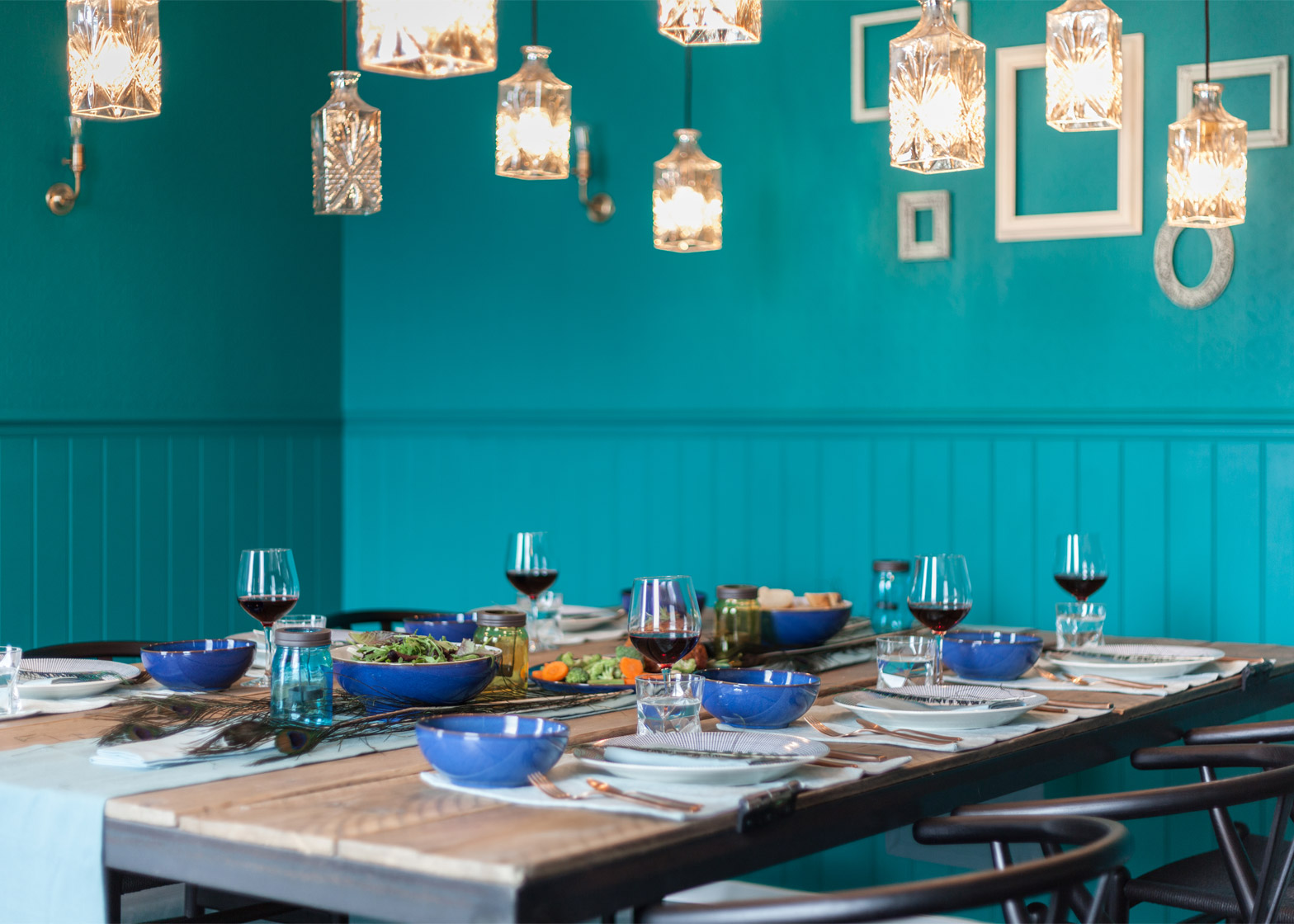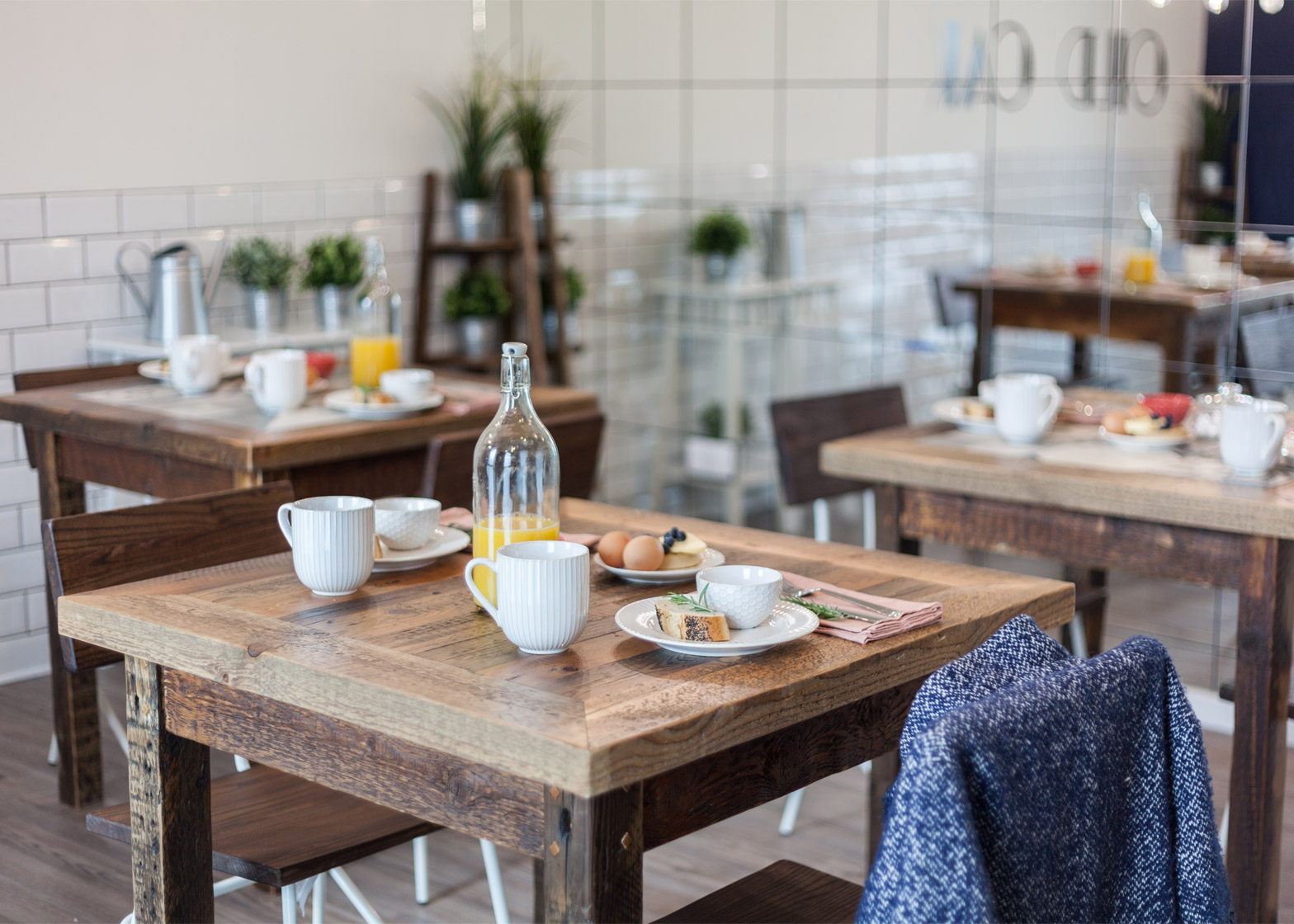Residents of the world's largest co-living block will have so many services to hand they may never have to leave the building, according to the entrepreneur behind the London project (+ slideshow).
When The Collective Old Oak opens its doors next month, it will be largest in a rash of shared-living spaces launching in cities all around the world, which operate like a cross between student housing and hotels.
Containing 550 bedrooms, the building is more than twice the size of the WeWork development that recently opened in New York.
"In theory you wouldn't have to leave the building if you didn't want to, because you have everything at your fingertips," said Reza Merchant, CEO of the company behind the development.
Merchant founded The Collective co-living company to cater to the trend for co-living, which offers serviced rooms in shared apartments with communal lounges, kitchens and bathrooms. It promises residents a more sociable lifestyle, for a more affordable price than the average rented studio flat.
Speaking to Dezeen during a tour of the site, Merchant said that young renters are increasingly seeking convenience. He claims that by integrating a co-working space, with a restaurant, gym, cinema, spa and launderette, the every desire of residents can be catered for within one building.
"We see the need to essentially have everything that you could possibly need while living in this building," he said.
Merchant described co-living as being about giving people flexibility and convenience on their doorstep.
"That's co-living, right?" he said. "Convenience is so important. Nowadays people are just used to everything at a touch of a button. It's essential to provide that same level of convenience and immediacy in the places where people live."
The 11-storey complex is set beside a canal in Willesden Junction, northwest London. The building was designed by PLP Architecture, which is also working with The Collective on another purpose-built co-living scheme in Stratford.
A large roof terrace, which is yet to be landscaped ahead of the official opening next month, overlooks some of the area's industrial premises and an on-site carpark.
The building is at the heart of a £10 billion government-backed regeneration of the area, which Merchant believes will become the Canary Wharf of northwest London.
Like most co-living schemes, Old Oak is targeted at young, single professionals aged between 21 and 35 and rent starts at £225 per week. The figure covers utility bills, council tax and Wi-Fi, as well as concierge, cleaning and security services, and linen changes.
Most of the space is divided up into "twodios" – two en-suite bedrooms that share a small kitchenette – located directly off long corridors, but there are also some private suites.
Each floor features one larger kitchen with a dining table, which is shared between 30 and 70 residents, and themed communal living spaces. A restaurant and co-working spaces are located in the lower floors of the building.
Three full-time community managers curate a programme of events in the communal living spaces, some of which are bookable for private events and parties.
"There has been a fundamental shift in the way people want to live," said Reza. He claims that co-living appeals to millennials who are settling down later and remaining commitment-free and "transient" for longer than any previous generation.
"People nowadays don't like to commit. Ultimately experiences are what people value above material possessions and co-living really embodies that," he added.
"There's a massive need for [co-living] and when there's a need for something the market find a way of delivering it."
The Collective's chief operating officer James Scott recently spoke to Dezeen about the shift in the rental market giving momentum to the co-living movement, claiming the model provides renters with the sociability of a flatshare combined with the convenience of hotel services.
"Buying a house is obviously for a lot of people still an aspiration but it's becoming less so with our generation," Reza told Dezeen. "Having a mortgage is a big commitment. Why have that worry when you have a super convenient offering that caters for all of your needs that doesn't commit you for a long period of time."
The Collective was founded in 2010 and has since developed co-living spaces in Acton, Camden, Hyde Park, Notting Hill and King's Cross – where Merchant is a resident – alongside a co-working schemes. Plans for further co-living spaces are also in the pipelines for Canary Wharf and Stratford.
The property company has also teamed up with Carl Turner on Peckham Levels, the conversion of a multi-storey cinema in southeast London into a co-working and events space with artists' studios.
Photography is by Amandine Alessandra.
Like Dezeen on Facebook for the latest architecture, interior and design news »

